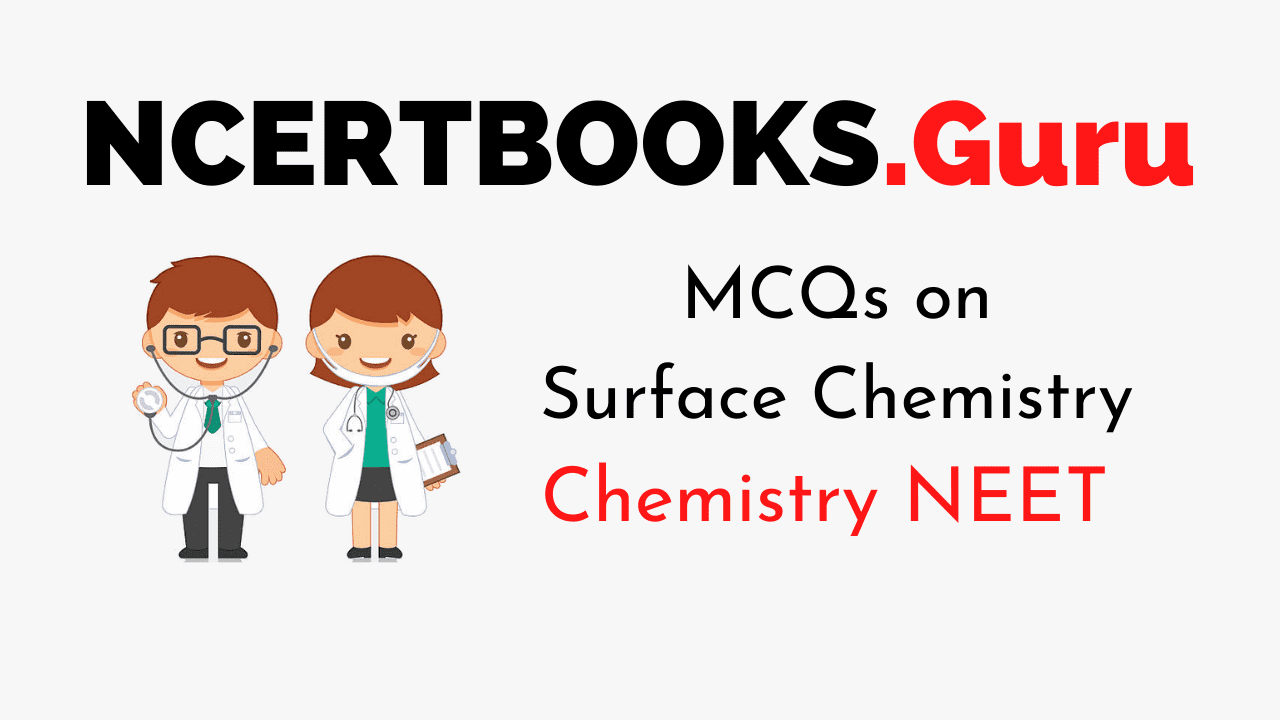NEET Chemistry is the scoring paper in the medical entrance examination. Here, you will discover the NEET Chemistry MCQ Questions for all Concepts as per the latest syllabus. Practice more on a regular basis with these NEET Chemistry objective questions on air pollution and improve your subject knowledge & problem-solving skills along with time management. NEET Chemistry Surface Chemistry Multiple Choice Questions make you feel confident in answering the question in the exam & increases your scores to high.
MCQs on Surface Chemistry
1. Which one of the following is an example of adsorption?
(a) ammonia in contact with water
(b) anhydrous CaCl2 with water
(c) silica gel in contact with water vapours
(d) all of these
Answer
Answer: (c)
2. At 15oC out of H2, CH4, CO2, NH3, which gas will be adsorbed maximum by charcoal?
(a) H2
(b) CH4
(c) CO2
(d) NH3
Answer
Answer: (d)
3. Which of the following colloids are solvent hating?
(a) lyophilic
(b) lyophobic
(c) hydrophilic
(d) none of these
Answer
Answer: (b)
4. If the dispersed phase is a liquid and the dispersion medium is solid, the colloid is known as
(a) foam
(b) sol
(c) emulsion
(d) gel
Answer
Answer: (d)
5. The process of separating a crystalloid, from a colloid by filtration is called
(a) emulsification
(b) dialysis
(c) coagulation
(d) Peptization
Answer
Answer: (b)
6. The movement of colloidal particles towards the oppositely charged electrodes on passing electric current is known as
(a) Tyndall effect
(b) Cataphoresis
(c) Brownian movement
(d) None of these
Answer
Answer: (b)
7. An emulsifier is a substance which
(a) stabilizes the emulsion
(b) coagulates the emulsion
(c) retards the dispersion of liquid in liquid
(d) causes homogenesis of emulsion
Answer
Answer: (a)
8. Homogeneous catalysis does mean
(a) Reactants and goods have to be at the same level
(b) Catalyst and reactants must be in the same phase
(c) The reaction mixture must be formed homogeneously during
(d) The reaction mixture distribution must be homogeneous
Answer
Answer: (b)
9. Which of the following kinds of catalysis can be explained by the adsorption theory?
(a) enzyme catalysis
(b) homogeneous catalysis
(c) acid base catalysis
(d) heterogeneous catalysis
Answer
Answer: (d)
10. The volume of gases H2, CH4, CO2 and NH3 adsorbed by 1 gm charcoal at 293 K can be given in the order?
(a) CH4 > CO2 > NH3 > H2
(b) CO2 > NH3 > H2 > CH4
(c) NH3 > CO2 > H2 > CH4
(d) NH3 > CO2 > CH4 > H2
Answer
Answer: (d)
